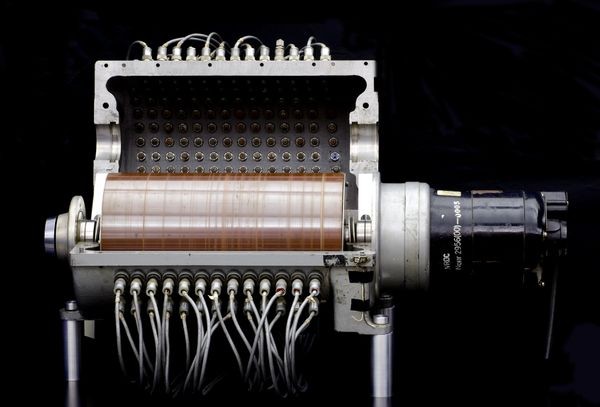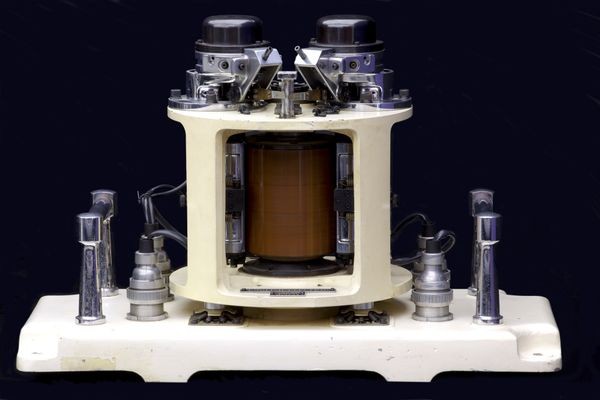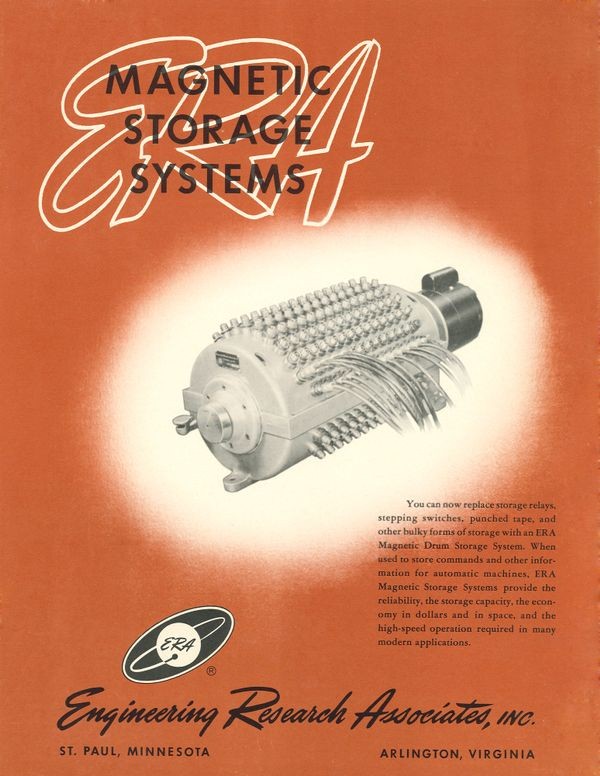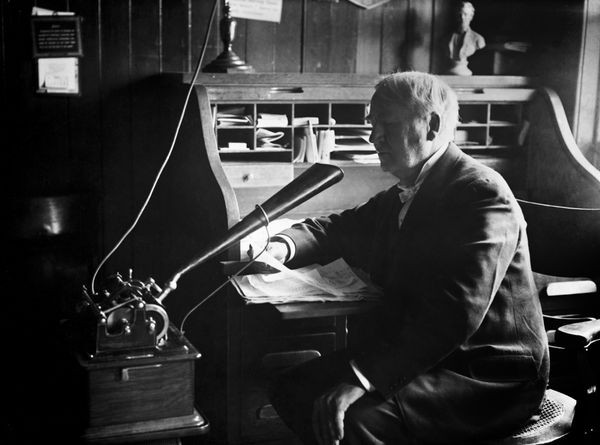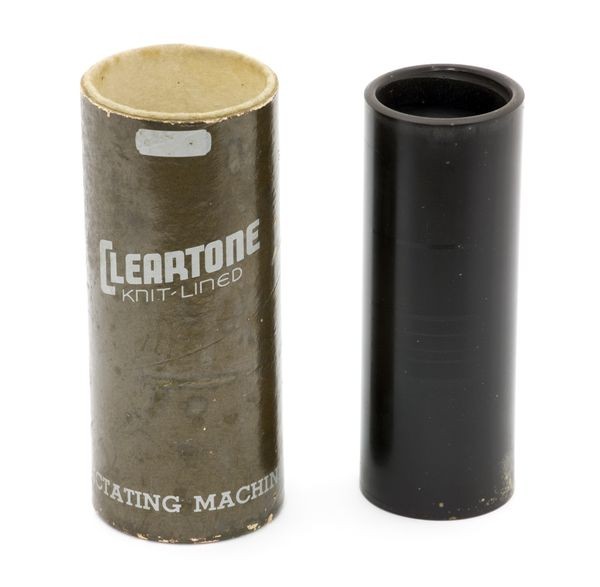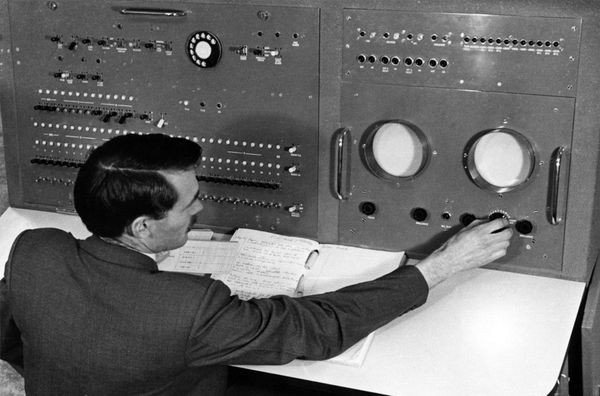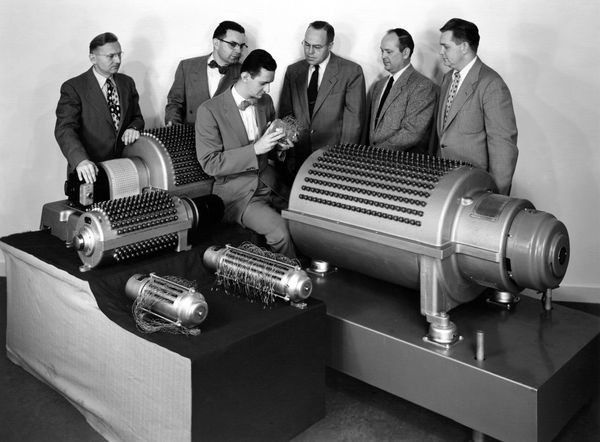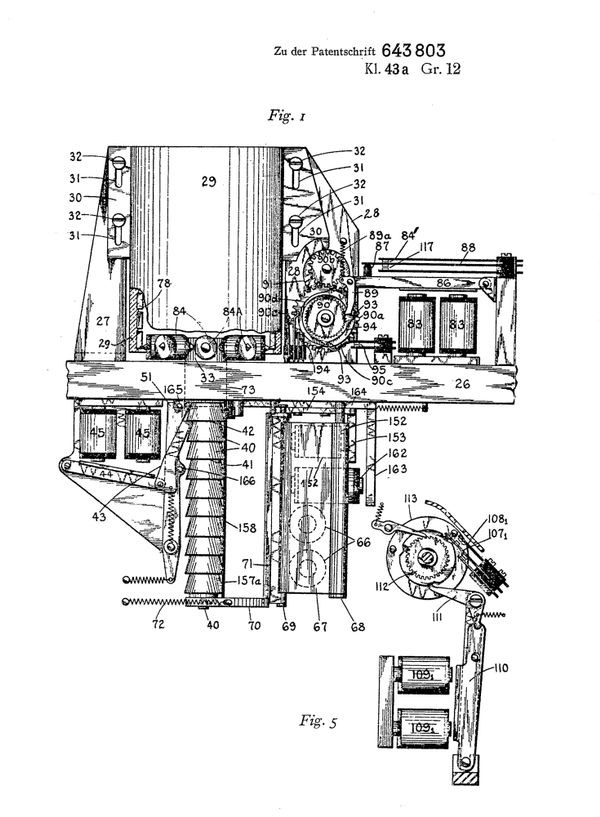Magnetic Drums
Magnetic drum
The drum's read/write heads are in the open top cover. Its surface has been scratched by misaligned heads.
Magnetic Drums
The Cold War was gathering steam in 1948. Eager to enhance America’s code-breaking capabilities, the U.S. Navy contracted with Engineering Research Associates (ERA) for a stored program computer. The result was Atlas, completed in 1950.
Atlas used magnetic drum memory, which stores information on the outside of a rotating cylinder coated with magnetic iron (ferromagnetic) material and circled by read/write heads in fixed positions.
Earlier drum systems included a 1932 non-rotating model by Austrian inventor Gustav Tauschek. Faster spinning drums improved data rates and cut waiting times to locate needed data.
English Electric DEUCE
These two Digital Electronic Universal Computing Engines at the Royal Aircraft Establishment could work (and even sing) together.
View Artifact DetailDeuce memory drum
The Deuce computer was an early vacuum tube machine based on a design by British mathematician and WWII code breaker Alan Turing. This drum memory held 32 kB.
View Artifact DetailERA Magnetic Storage Systems
ERA began making magnetic drums for Navy cryptography computers, but soon started designing and building electronic computers of its own.
View Artifact DetailThomas Edison with Ediphone dictating machine
Thomas Edison's Ediphone was like a drum memory for sound. It had a tube to speak in and the voice vibrations would be recorded on a wax cylinder. A secretary would then type up the recording and shave the used layer of the cylinder so it could be reused.
View Artifact DetailPhonograph recording cylinder
These wax tubes for a cylinder phonograph could record and play back speech or music. Cylinders were still used in offices for dictation machines until the end of WWII.
View Artifact DetailDEUCE computer
Dr. Ron Smart monitors the console of the drum-based DEUCE computer at the University of New South Wales, Australia.
View Artifact DetailEarly Engineering Research Associates (ERA) employees
The ERA founders worked for the Navy on cryptanalysis during World War II, and continued making special code breaking machines for them afterwards.
View Artifact DetailTauschek patent
Austrian Gustav Tauschek patented an early form of magnetic drum memory in 1932. IBM bought the rights to this and several other Tauschek inventions.
View Artifact Detail